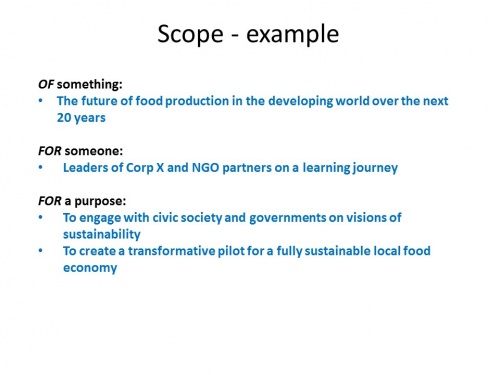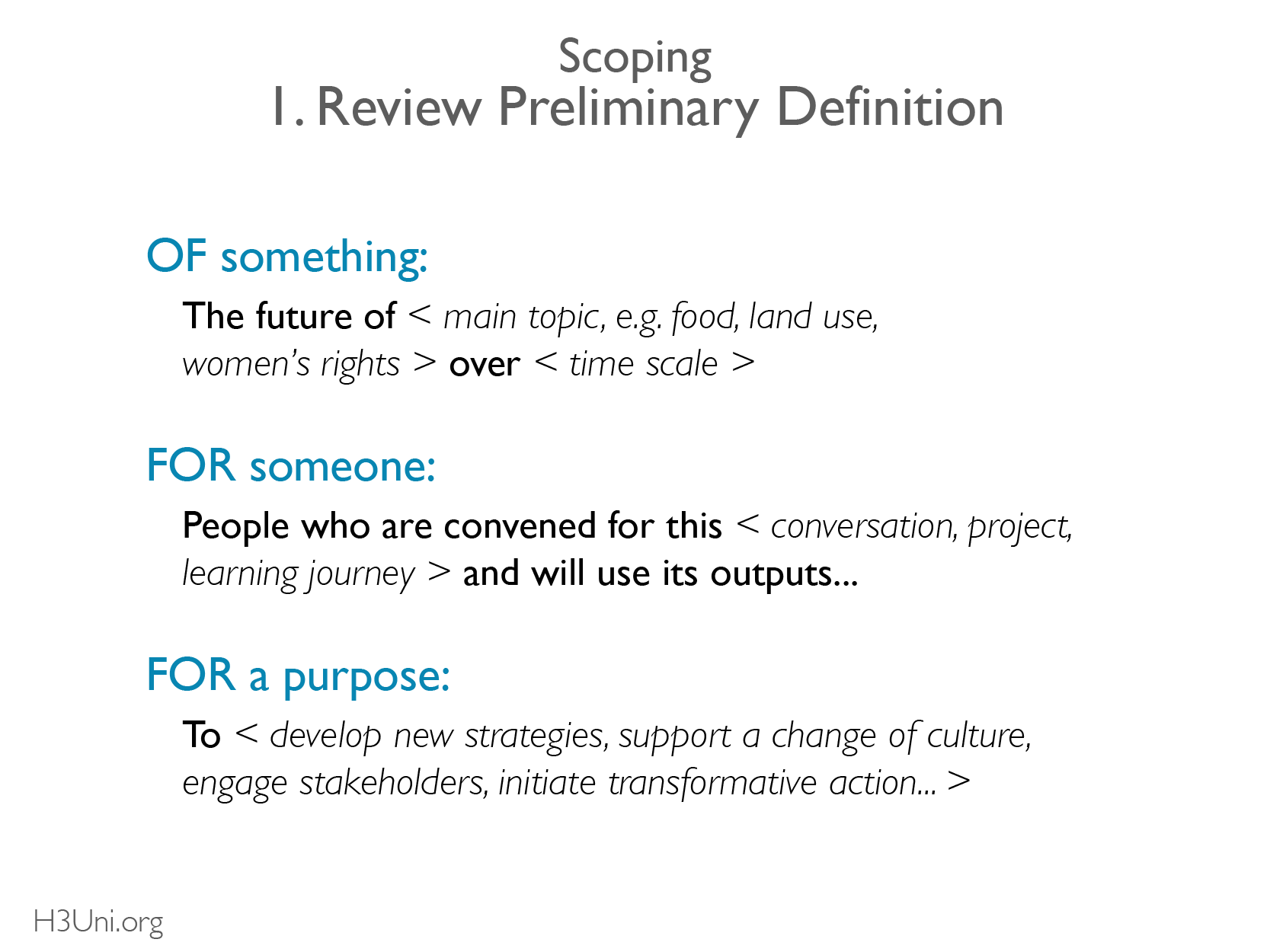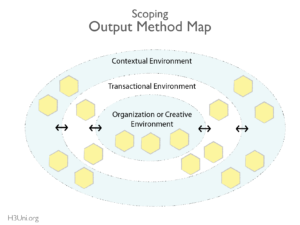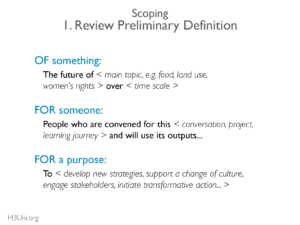Facilitation Guide
Scoping
Purpose
Provides an arena, a focus and a set of relevant factors for a strategic conversation, a learning journey, an innovation project or a project to transform a situation without constraining the vision or setting rigid boundaries.
When to use?
To set a context and direction for using Three Horizons and the other group thinking tools in this Resource Library. Please see the Scoping Tutorial for a variant for scoping other methods.
Set Up
Standard set up – see H3Uni Practice Framework Tutorial
Outputs
A scoping statement shared by all the participants in the process.
Steps
Depending on the situation you will use Step 1 below or it may be that there is a leader of the process with whom a draft scoping statement has been produced before the session. In this case it is just a matter of putting this up and facilitating a discussion around it, marking it up with any necessary amendments. In this case the primary objective is developing the shared understanding and ownership of the statement. Even in this case it is worth going through Step 2 to introduce the idea of the transactional and contextual environments as a way to clarify the scope of the project and what will be considered as relevant.
Step 1. Review Preliminary Definition
Offer the preliminary definition that has already been established with the sponsor, or invite suggestions. Go through the three parts of the statement, keeping the conversation quite light, but making sure that you get an outward focused and inclusive statement as far as possible.
Step 2 - Map Transactional & Contextual Environments
- Draw up the diagram on a flip chart, with the name of the organisation or group in the centre space.
- Introduce the idea of the two environments as a way to structure the exploration, making clear that playing with the boundary between transactional and contextual environments is where a lot of change comes from – use an example they can all relate to of change coming from an unusual player in the contextual environment.
- Trigger Question: “With the scope in mind, who do we currently see as major players in the transactional space?” Write up the responses in the space.
- Trigger Question: “With the scope in mind, what are some of the major players and sources of change in the contextual space?” Write up the responses in the space.
Step 3 - Review Scoping Statement
Trigger Question: “Given the map, should we revise the scoping in any way?”
Tips
- There is usually somebody who has taken the lead in convening a group, we refer to this person as the “sponsor” of the process overall. The degree of their authority over the group will vary with the situation, and this will have an influence over how the scope of a project is set, since this is very sensitive to power dynamics within and around the group. In any situation it will be very helpful to do an in depth interview process with the sponsor to either develop a draft scoping statement or at least to deepen understanding of what sort of scope is going to be relevant.
- Remember, the purpose of establishing a scoping statement is to set off, as if on an expedition of discovery, with a shared intent, but staying as open as possible to what might be discovered on the way. Developing the statement should not become the journey. If it generates a lot of discussion and doesn’t converge then ask the leader of the group for guidance, and be ready to keep it fairly open to allow learning. The ambiguity in the scope is important information about what needs to be explored, not a failure to define objectives of the work.
- The choice of focus and boundaries touches on fundamental issues of worldview, identity and power. This guide does not attempt to provide a way to handle these, and the facilitator needs to draw on all their skill and experience to help the team avoid falling into preemptive closure on those aspects of the situation that may need to be surfaced to challenge current assumptions.
![]()
Creative Commons Attribution-ShareAlike 4.0 International (CC BY-SA 4.0) license framework.
How to Use this License
CC BY-BY-SA
This license allows reusers to distribute, remix, adapt, and build upon the material in any medium or format, so long as attribution is given to the creator. The license allows for commercial use. If you remix, adapt, or build upon the material, you must license the modified material under identical terms.
Read about Open Access to H3Uni Methods and Materials



